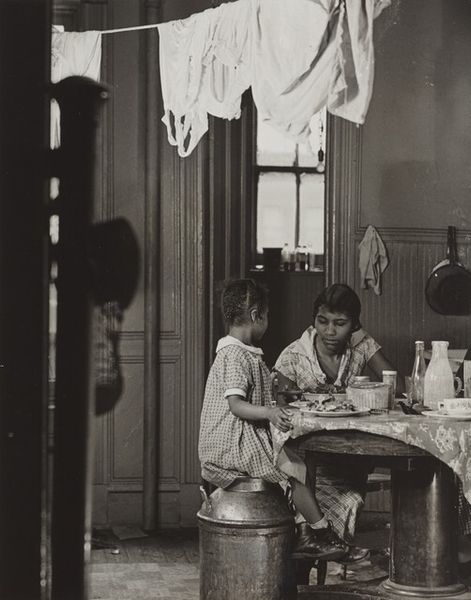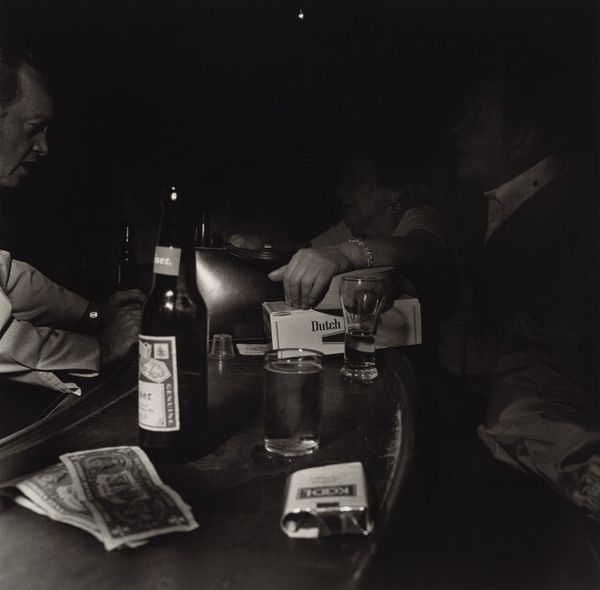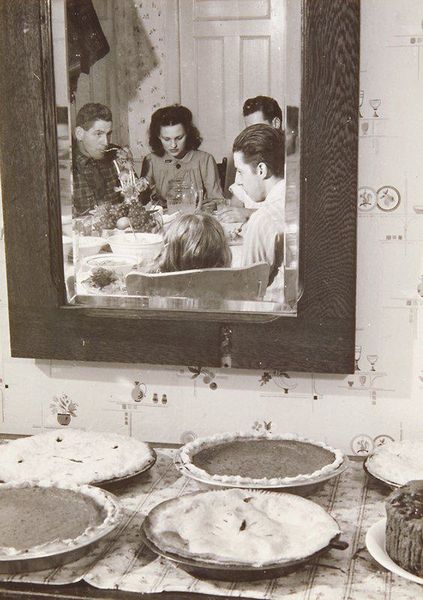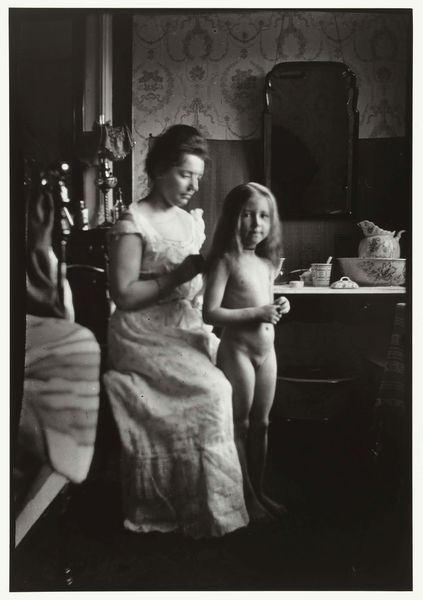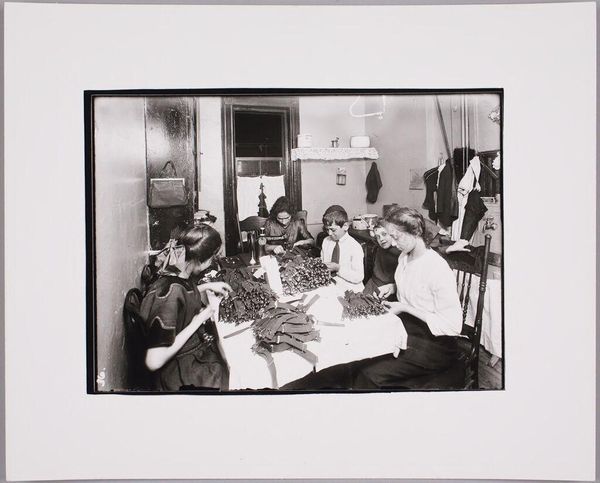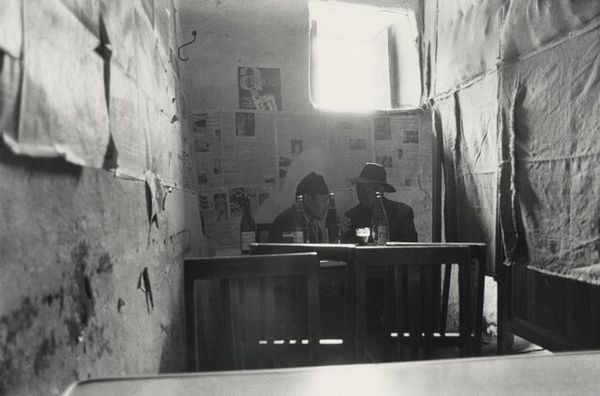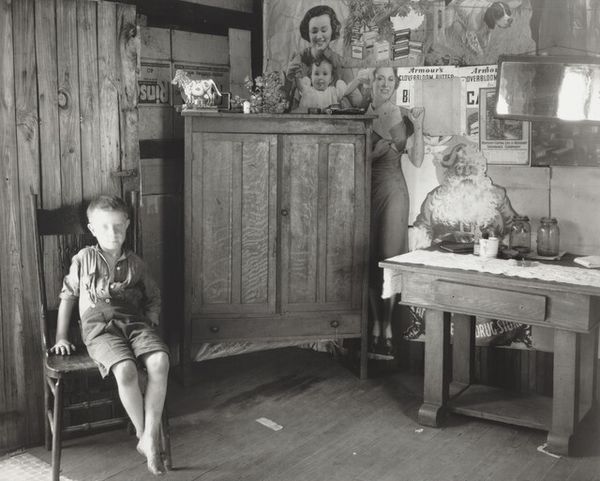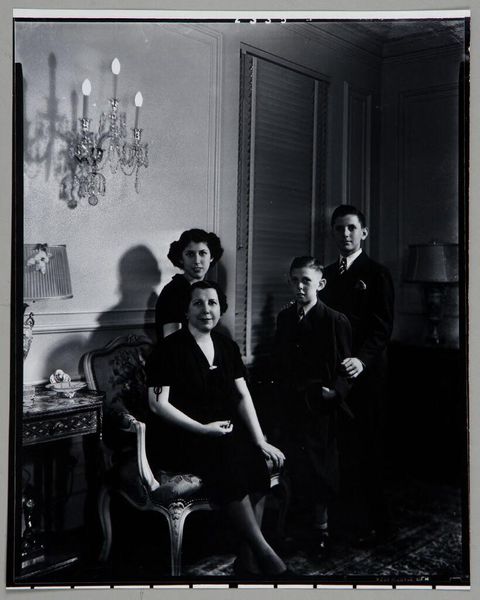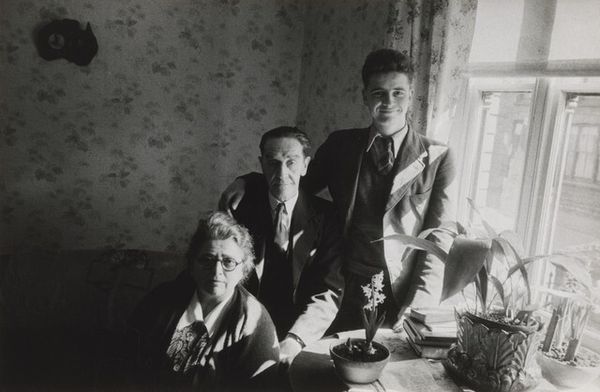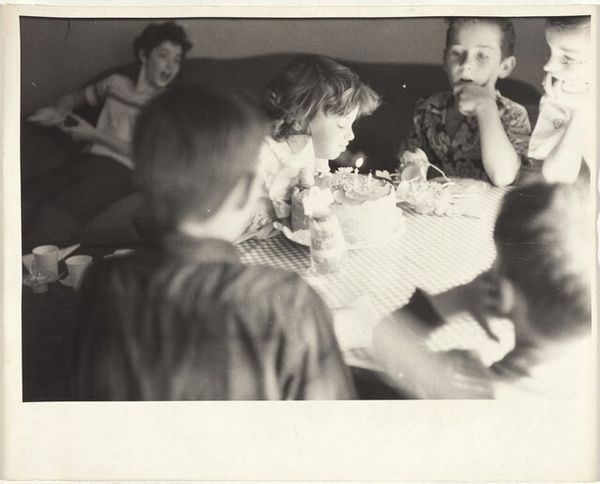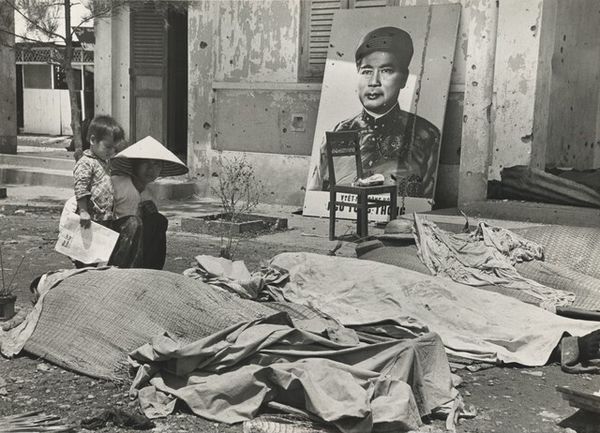
The Handcrafts Group Organized by Families of Shanghai Business Owners Making Chinese Dolls Possibly 1956 - 2021
0:00
0:00
photography
#
portrait
#
black and white photography
#
asian-art
#
photography
#
historical photography
#
monochrome photography
#
realism
Dimensions: image: 44.1 × 45.7 cm (17 3/8 × 18 in.) sheet: 61 × 50.5 cm (24 × 19 7/8 in.)
Copyright: National Gallery of Art: CC0 1.0
Editor: We’re looking at "The Handcrafts Group Organized by Families of Shanghai Business Owners Making Chinese Dolls," a monochrome photograph by Niu Weiyu, possibly created anytime between 1956 and 2021. It's a really compelling image; there's a strong sense of quiet concentration in the figures. What stands out to you about this work? Curator: It’s interesting how the photograph functions both as a portrait and as a document of labor. Considering the possible timeframe of its creation, particularly the earlier dates, this image may reflect the evolving role of private business owners and their families in a socialist society. Editor: That's a perspective I hadn't considered. Can you expand on that a bit? Curator: Certainly. The title highlights that this is a "handcrafts group organized by families." In the mid-20th century, the Chinese government encouraged collective efforts. Photography at the time served to document the integration of private business into the socialist structure, and served as visual evidence of evolving social roles. Notice how the composition, with the women’s shared task and communal table, visually reinforces this collective idea. What are your thoughts about that? Editor: I see that now. It definitely emphasizes the idea of unity and working together, which would have been important during that period. It also feels like there is tension between individuality and collectivism here, which makes the piece more complex than it seems. It highlights the people, yet only through a communal act. Curator: Precisely. The success and dissemination of imagery such as these was determined through layers of power that dictated social life. The women may have gained access to an occupation because of social circumstance. What's left unsaid can be just as significant. Editor: That's given me a lot to think about in terms of how socio-political forces impact both the creation and the interpretation of art. I am intrigued by the relationship of image makers and government. Thanks so much. Curator: It's crucial to remember the conditions under which these images were created and circulated to grasp a more complete understanding of their historical and cultural meaning. Thank you.
Comments
No comments
Be the first to comment and join the conversation on the ultimate creative platform.
